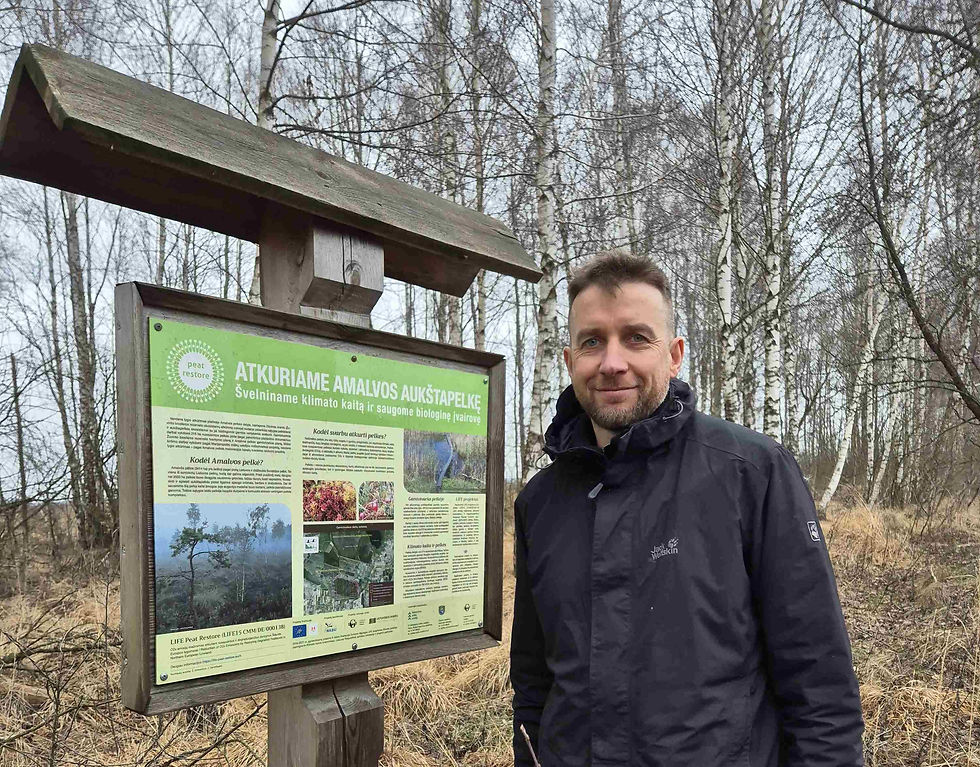On the occasion of World Wetlands Day, we invite you to a remote lesson about wetlands
- nerijus zableckis
- Jan 24, 2022
- 2 min read
Updated: Jan 17, 2023

This year marks the 50th anniversary of the 2nd February 1971, then on the Caspian seaside resort of Ramsar, Israel, 18 countries around the world have signed the United Nations Convention (also known as the Ramsar Convention or the Treaty), which commits to the protection and responsible use of the world's wetlands and other wetlands: lowland, intermediate wetlands, upland, reed, natural and man-made water bodies, permanently or temporarily flooded areas where water is concentrated or constantly flowing (fresh, semi-salt or even salt). They also include sea coasts with a depth of no more than 6 meters at low tide.
The text of the Ramsar Convention, as amended on 21 December 1975, as amended, is available on the Convention website (in English).
1974 The world's first protected wetland of international importance was declared on the Cobourg Peninsula along the coast of the Timorese Sea (North Australia), which is rich in protected and rare marine species and rich in bird colonies.
Today, 171 states have signed the Ramsar Treaty. There are 2,416 protected Ramsar sites in the world (as of early 2021), totaling more than 254 million. ha area.
Lithuania acceded to the Convention in 1993. Currently, 7 wetlands of international significance are protected in our country: Čepkeliai, Kamanos and Viešvilė Nature Reserves, Žuvintas Biosphere Reserve, Nemunas Delta Regional Park, Girutiškis Mire and Adutiškis-Svyla-Birvėta Wetlands Complex.
The World Conservation Organization and the Secretariat of the Ramsar Convention publish a new theme for International Wetlands Day every year. The theme of World Wetlands Day 2021, 'Wetlands and Water', is that wetlands, water and life are inseparable.
On the occasion of World Wetlands Day, we invite you to a remote lesson about wetlands. The distance learning lesson “Mire and Man” of the program series “Destroyers of Natural Myths” of the LMNŠC Department of Nature and Ecological Education is led by the Foundation's expert dr. Jūratė Sendžikaitė.




neototo
neototo
neototo
neototo
neototo
neototo
neototo
neototo
neototo
neototo
sesetoto
sesetoto
situs terbaik dengan beragam jenis permainan terlengkap
akuntoto
situs akuntoto
akuntoto
Situs toto slot terpercaya anti nawala dengan peluang kemenangan termudah
amavi5d
adalah
situs toto dengan beragam jenis pasaran terlengkap dan bocoran akurat prediksi angka main setiap hari
daftar akun vip aceh4d
daftar akun vip aceh4d
daftar akun vip aceh4d
daftar akun vip aceh4d
daftar akun vip aceh4d
daftar aceh4d
daftar aceh4d
link alternatif aceh4d
link alternatif aceh4d
daftar aceh4d
daftar aceh4d
daftar aceh4d
daftar aceh4d
daftar aceh4d